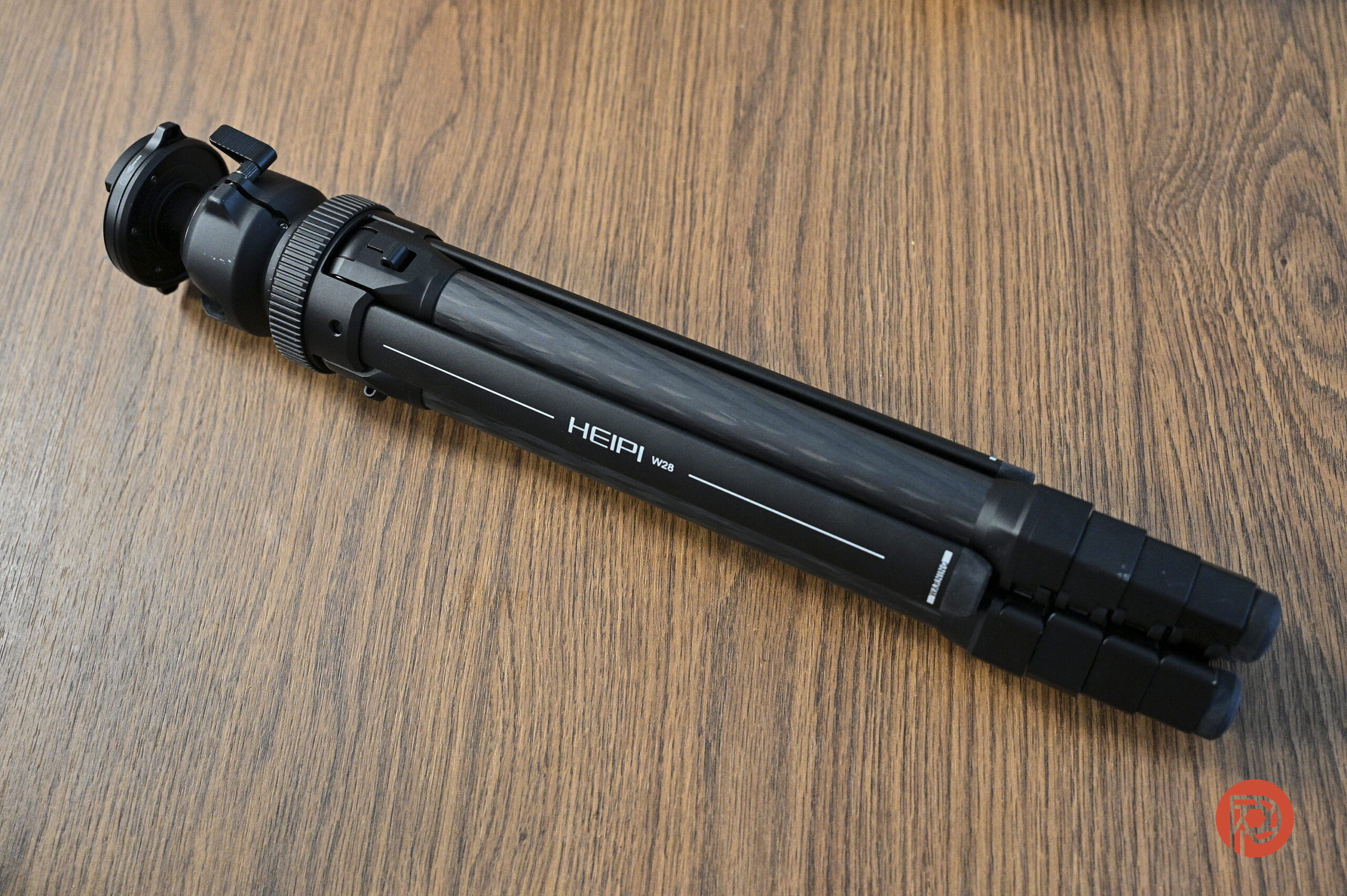The Heipi 3-in-1 travel tripod was a smash hit on Kickstarter. It received over 1 million USD in backing from a little over 3100 backers. It also collected about 1.28 million USD from Indiegogo. And while it may seem a little heavier than it looks, it still serves the purpose of a multifunctional travel tripod for photographers and bloggers. What I love about it is the integrated design combining the main and sub-tripods. While at first glance, it may look very similar to a travel tripod from an unmentionable brand, it does a one-up on this model. Read more to see what we loved about the Heipi 3-in-1 and what could have been better.
Every travel tripod promises the world for photographers on the go. Lightweight, multifunctionality, weather resistance, portability, and durability – these are just some of the features nearly all of them promise. On paper, it all seems hunky dory until you start using it out in the field. Some of them start showing their true colors even in barely challenging conditions. Others give up when it comes to the more extreme elements.
We’ve tested the Heipi 3-in-1 travel tripod to see if it can keep going despite being tested to the limits. We’re also pretty pleased with some of the innovations here, making work easier for photographers who are always on the move.
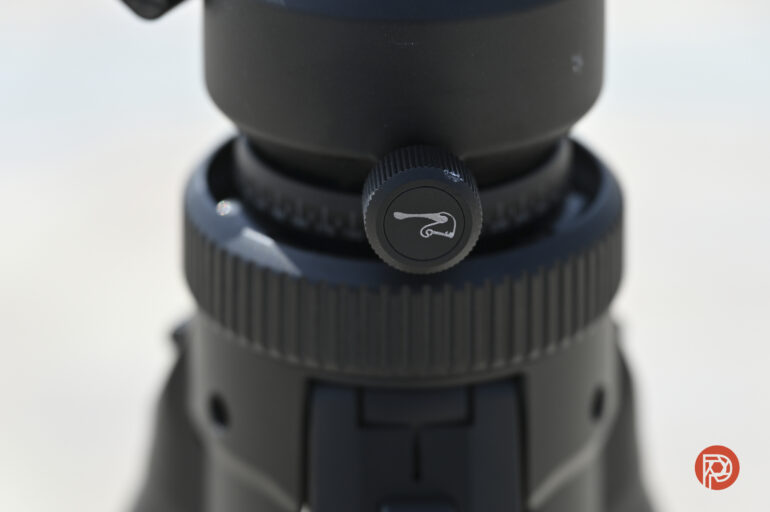
First up, though, what’s the meaning behind the name, and what is that bird logo supposed to be? As it turns out, it’s all linked together. The Heipi Club page on Facebook states, “Heipi, is a short Chinese name of the black-faced spoonbill (Platalea minor). It is a large white wading bird with a distinctively shaped beak-looking like a spoon, or a “pi pa” (Chinese musical instrument).” That post cleared up my confusion when I saw what first looked like squiggles on the logo of the box but turned out to be a bird with the word “spoonbill” in cursive handwriting.
The Big Picture
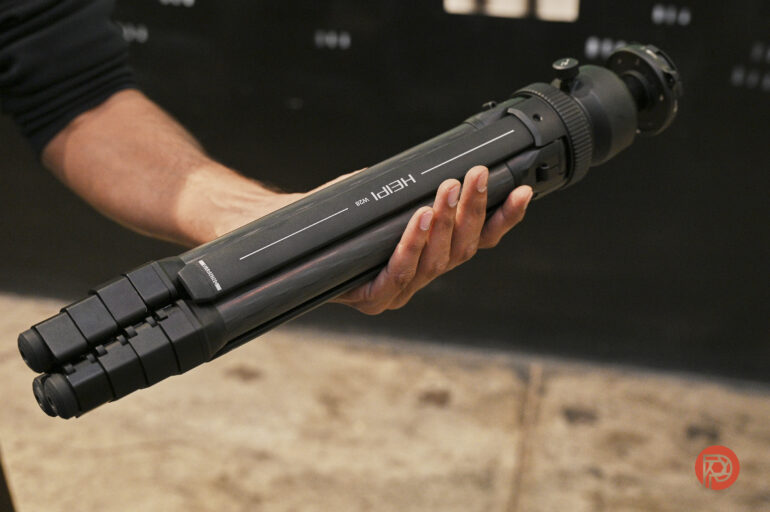
The Heipi 3-in-1 travel tripod is definitely heavier than it looks. So if you were expecting something that seems like it’s the lightest in its class, it’s certainly not that. But in some ways, this works to your benefit. Even when fully extended, the tripod doesn’t feel like it’ll tip over with the slightest gust of wind. I often used to get this feeling with various other lightweight tripods. It folds quickly and has a decent maximum payload capability of 25kg/55 lbs. What’s most impressive for me is the patented inbuilt, removable “sub tripod,” which doubles as the main tripod’s center column when required. But pull it out, and it turns into a 3-legged desk tripod which can work as a secondary smaller tripod for a smartphone or vlogging camera.
It definitely doesn’t look like a tripod that can take a few knocks. But that feeling tends to dampen a bit when you take it out of the bag. Suddenly it feels better than you expected it to be. While I wouldn’t call the material premium, running your fingers across the surface feels good. The build quality is mighty impressive. The tripod stood up to all our tests quite notably.
Based on initial feedback from pros, Heipi quickly redesigned the tripod to give it some improvements. We were initially offered the prototype to test, but this was replaced with the version backers will receive in the next few weeks. It’s versatile, has a compact design (albeit clearly inspired from somewhere else), and has an innovative inbuilt sub-tripod.
Although it’s a few ounces more than I’m comfortable traveling with, I’m giving the Heipi 3-in-1 tripod a full five stars.

Pros
- Compact at just under 18 inches when folded down
- Integrated secondary sub tripod, which doubles as a stable height extender
- Ballhead has a built-in, extendable smartphone holder
- Locking screw ring for stabilizing the central column/sub tripod at various heights
- Bubble levels on both main and sub-tripod
- Hidden spiked feet for quick access
- 25kg/55lbs load capacity ballhead
- Quick release plate locking ring on ballhead
- Ballhead pan clicks every 10 degrees
- Integrated counterweight hook
- Three 1/4″ accessory ports on main and sub-tripod
- Large additional quick release plate included
Cons
- Heavier than it looks. All together the Heipi 3-in-1 weighs 1.35kg/3lbs
- Patented leg-locking levers might not be all that quick the first few times you use them.
- The 1/4″ accessory port holes on the main tripod don’t perfectly line up with the ones on the sub tripod. The latter needs to be raised ever so slightly for you to be able to use these ports when the sub-tripod is still inside the main one. I can’t understand why this is the case, and it doesn’t seem right.
- The paint coatings on the central locking ring, the leg angle locks, and the leg locks are wearing off after just a few days of usage. If you’re someone like me who likes to keep their gear looking like new, this is going to be near impossible if the coating easily wears off like this.
- No Allen keys included
Innovations
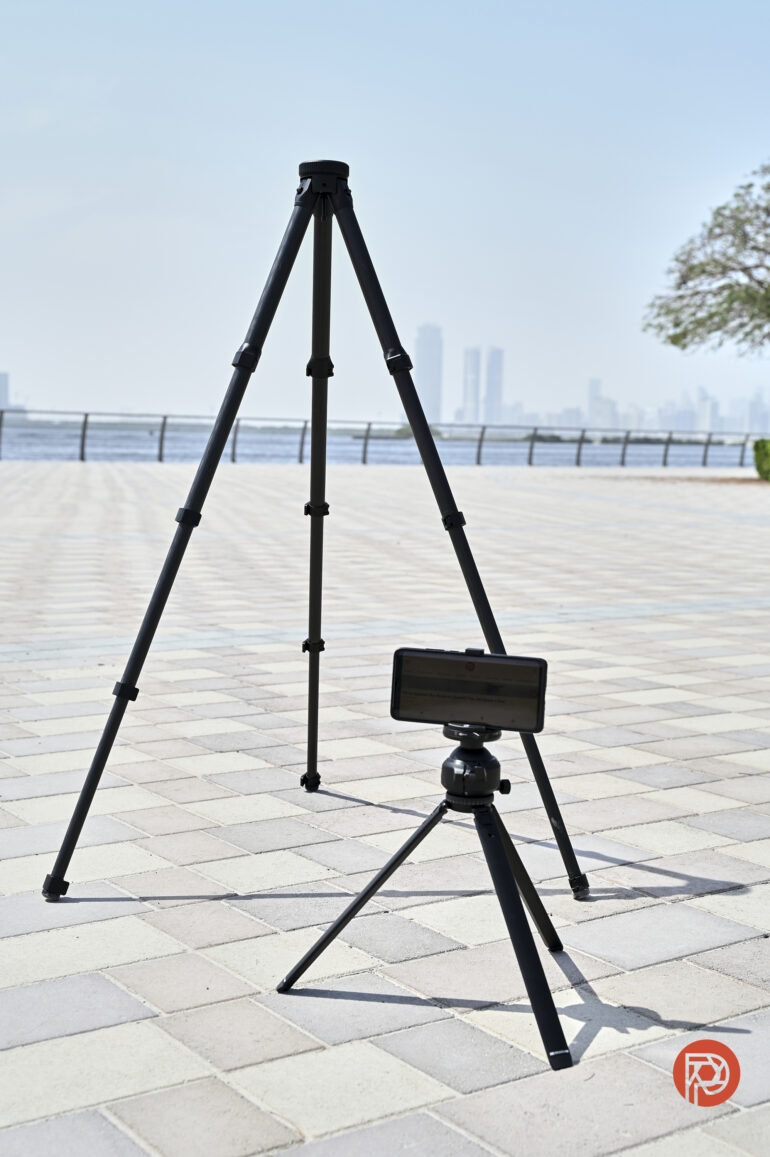
Multi-functional tripods aren’t new, but this is the first one I’ve seen where the central column doubles up as a smaller second tripod. And it’s not something made as an afterthought or meant to be a mere formality. This sub-tripod can genuinely be a secondary tripod for your smartphone, pocket camera, or vlogging camera. This sub tripod also has a built-in smartphone holder for those times when you just need to get some quick, steady footage on your mobile. Extending this upward gets you extra height in what Heipi calls the High Mode. Flip it around and attach it under the center of the tripod for some macro photography in Inverted Mode. Heipi claims to have three central columns provided much better stability than when using the standard single-column model.
Gear Used
Shortly after Heipi shipped the 3-in-1 tripod to me, they sent me a note saying they sent a final prototype. But they also mentioned that the model going out to backers would have a few changes from this one. At this point, I asked them to intercept the shipment they sent out and send me the revised model instead. The main reason for this was that the tripod that backers would receive (different from the prototype) would have more quick-release plate compatibility. In addition to this, after listening to feedback from their first batch of reviewers, they increased the size of the pan knob on the ball head.
These are significant changes, not just cosmetic ones, so they agreed when I asked them to send me the revised version instead. The model I tested is the same one that Kickstarter backers will receive.
I tested the Heipie 3-in-1 tripod with a bucket of water, a freezer, sunlight, a flight of 10 stairs, a box of household items, and an 11lb dumbbell.
Ergonomics
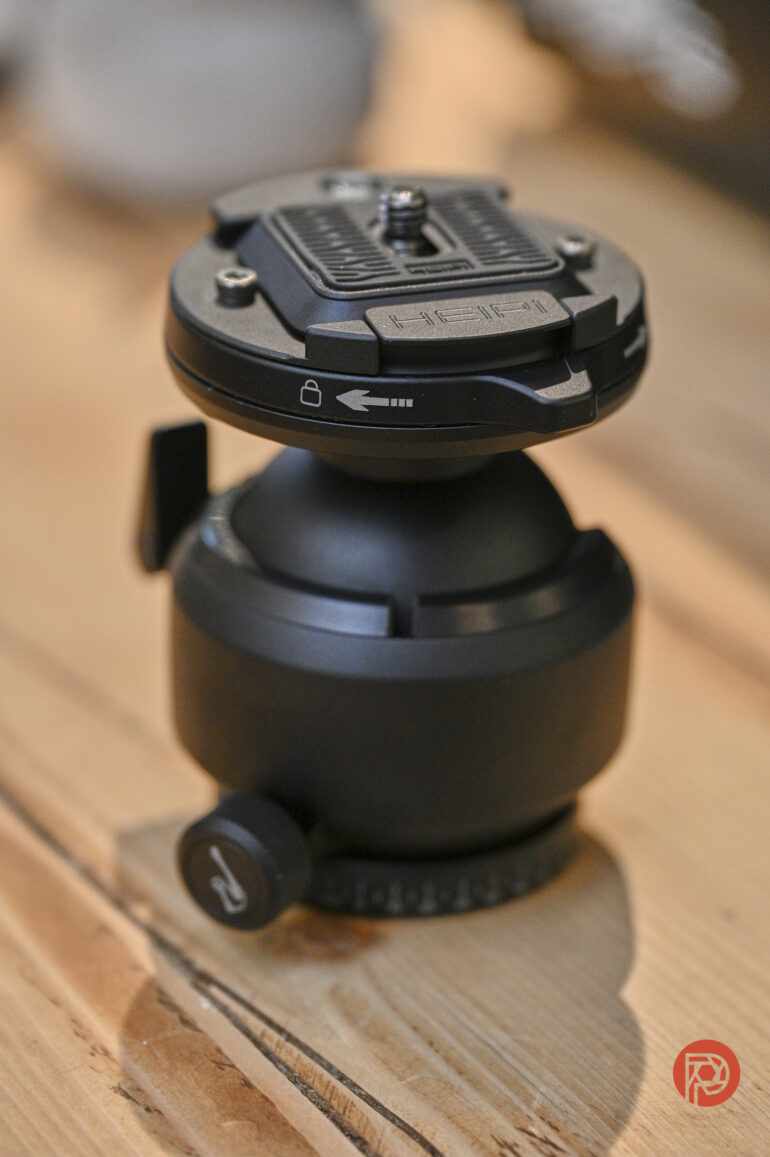
Many travel tripod models come with a small or often flimsy ball head. The one on the Heipi travel tripod is certainly not one of these kinds. About the size of a baseball and feeling as solid as one, this has multiple quick-release plate model compatibility.
It also comes with a quick twist ring that helps get the plate off faster. The rep still recommends using the Heipi plate over any other brand’s models because of the “unified design logic to it.” They’ve added two pins on the ball head to prevent the Heipi plate from falling off and noted that the anti-release screws on 3rd party plates might not work perfectly with this. The ball head has a standard 3/4″ screw thread at the base.
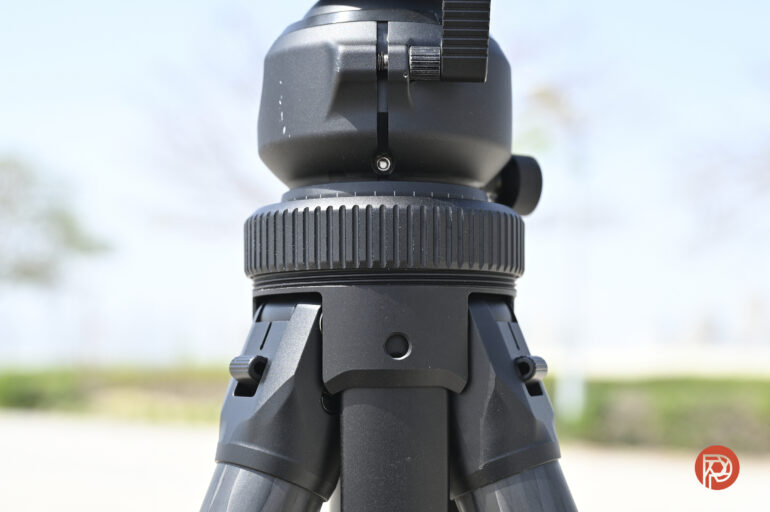
Right under the ball head is where the center column locking ring is located. This is what stabilizes the integrated sub-tripod when it’s raised for extra reach or placed upside down to get your camera closer to the ground.
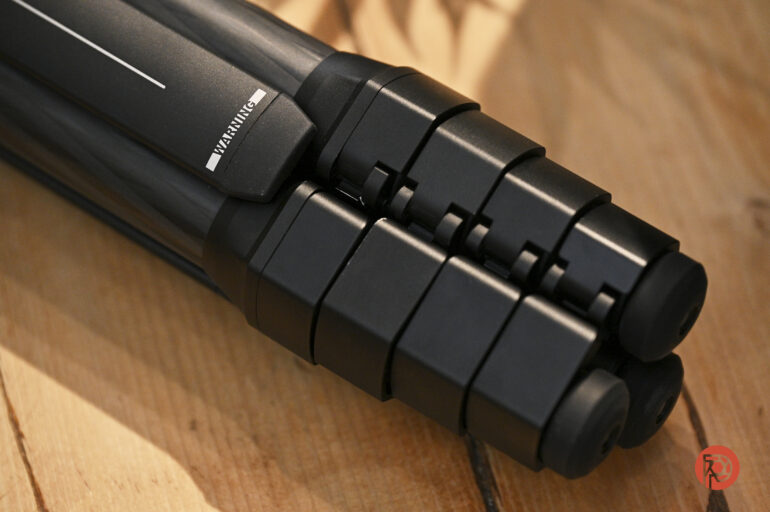
The leg locks take a while to get used to. They are still not as quick as I’d like them to be when I want to extend a portion of a leg.
Skip The Specs. Let’s Do Some Tests
But enough about the tripod itself. Every tripod, when used right, can provide a stable picture. But travel tripods often get pushed to the limits. Conditions outdoors often fluctuate, and you never really know if a tripod can hold up to extreme weather. I tested the Heipi tripod in 5 very different and challenging scenarios to see if it could still continue working. After all, when you’re on a hike in the mountains, by a waterfall, or even trudging through hot sand dunes, your travel tripod needs to continue assisting you in taking amazing photos.
These tests are extreme, but they aren’t done to see if your tripod will start working perfectly right away. On the contrary, I gave each of these tests ample time and tested the tripod out after a considerable period of waiting. Just as any good artist would do with their valued gear. I mean, you wouldn’t go about grilling a prime steak right after you doused out a large fire on your bbq grill, would you?
The Freeze Test
This test was limited to the ballhead and sub-tripod. If I had a much larger freezer, I could have probably tested the whole tripod out.
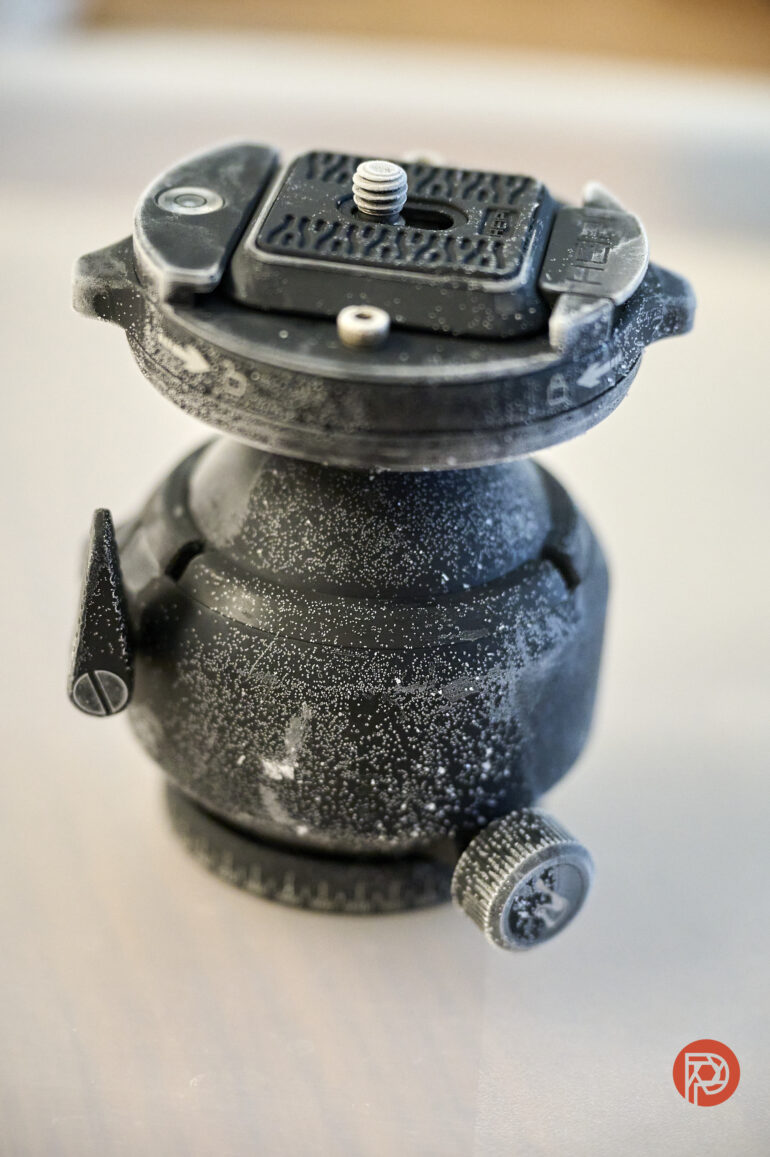
Both these items were kept inside the freezer for 8 hours. Initially, I thought of protecting them with cling wrap. However, that’s not something you’d leave on your tripod when outdoors. Let’s say you lost your Heipi in the mountains during a blizzard and couldn’t retrieve it for a few hours. It would be out there, nakedly braving the wind chill and snow until you got back. I wish I could have gone to Ski Dubai to bury the tripod in the ice there. Too much red tape to be able to get that done, so into the freezer these went.
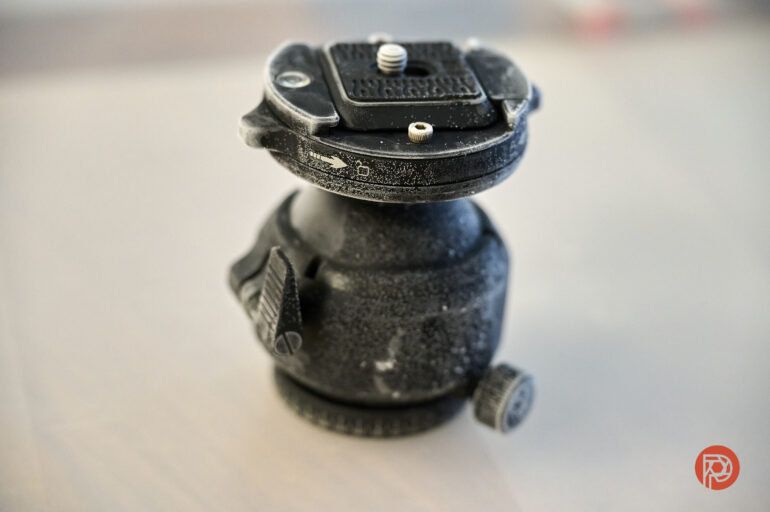
Even after being solidly frozen, the ballhead was as smooth as during regular temperatures. The sub-tripod had a bit of stiffness at first, but about 5 minutes later, it seemed normal. I guess you can expect some rigidity when using it in sub-zero conditions but nothing out of the ordinary, which may slow you down considerably. But hey, in sub-zero conditions, you’d be slowing down too.
Freeze Test – Passed
The Submerged Test
You’re on a fishing trip at your local lake. The Heipi tripod is attached to the back of your backpack. Heading back to the shore in the evening, a few meters from the banks, the buckle on that holding strap comes undone, and the tripod falls into the lake. You can’t dive into it or round up a search party until the next day, so the Heipi is sleeping with the fish for a night.
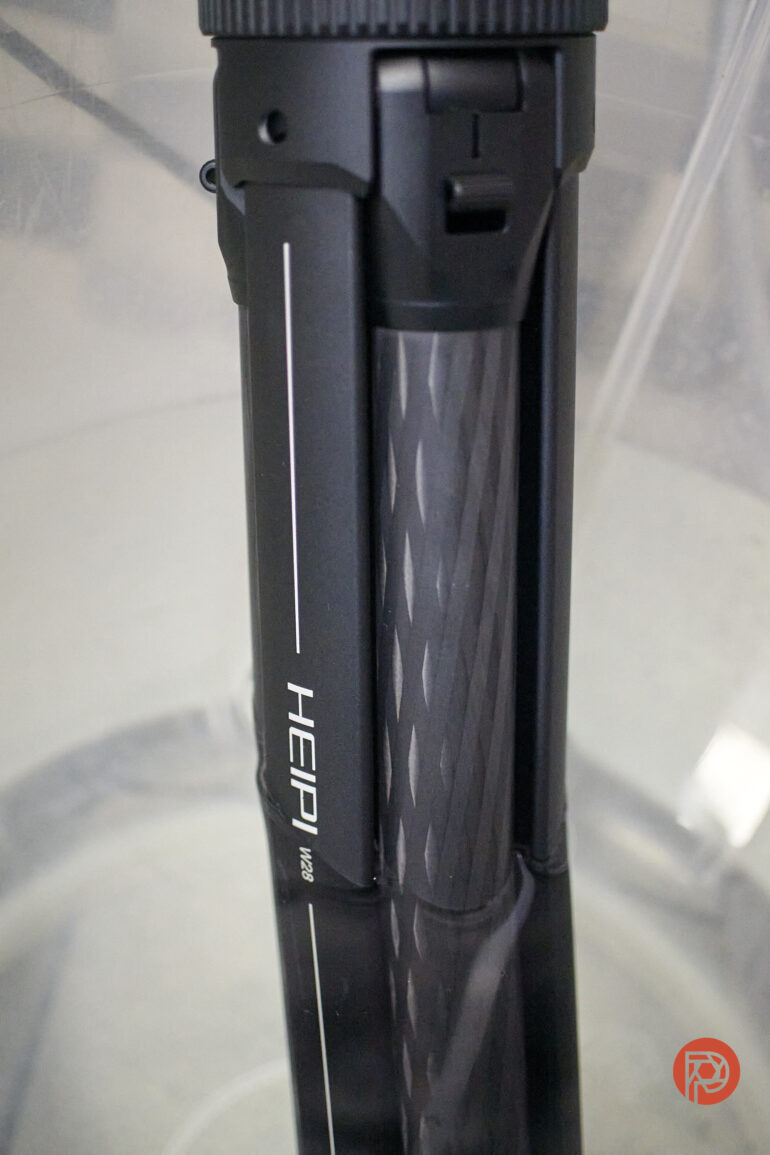
Except that I have no lake nearby and certainly no diving experience, so my Heipi tripod spent the night inside a bucket of water. With no fish of course. The next morning, I carefully took it out and left it upside down for half an hour to let the water drain out. Then I removed the ballhead and the sub tripod from the main tripod and kept these aside after wiping them down. I then extended the legs of the main tripod completely and went over the joints with an air blower. Once I felt I had puffed out most of the residual water, I thoroughly wiped it with a microfibre cloth. Everything looked alright at this point. This was around 830am in the morning, so I could continue right after this to my next test. (Note: I didn’t see any signs of corrosion even days later).
The Heat Test
If I were to take a day-long timelapse in Dubai, this would surely heat up the tripod. I didn’t quite get the 110-120F temperatures I was hoping for; the tripod arrived towards the onset of winter. Still, temperatures did peak at 105F or so for most of the day. So as soon as I wiped down the tripod after the overnight submerging test, I left it out on the balcony to enjoy a day of sunshine. This also meant that it took the full brunt of the dust in the air. It could only have worsened if I lived near the beach, which would have added a lot of salt to the humidity.
After a day’s work, I returned home and checked on the Heipi immediately. This time, the sub-tripod was perfectly fine. The ball head still seemed to hold some water in it, which I discovered while trying to blow the dust off it.
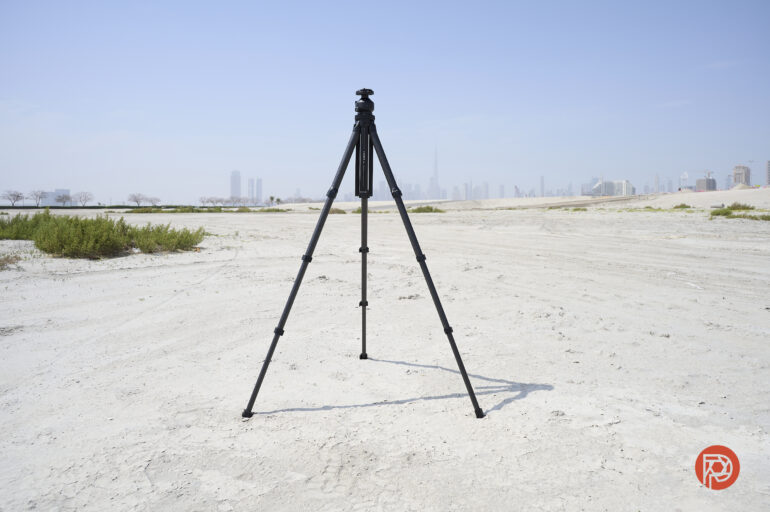
I noticed some stiffness in the main tripod’s legs while trying to collapse them. The legs extended like I expected them to, but various sections of two of the legs seems a little less reluctant to collapse back smoothly. This only lasted a handful of days, after which I couldn’t notice any difference between the resistance of the sections on all three legs.
I also took it out for an hour at noon on a sandy patch of land near home. If it could talk, I think the Heipi would ask me to put it through harsher tests.
Submerge and heat tests – Passed.
The Load Test
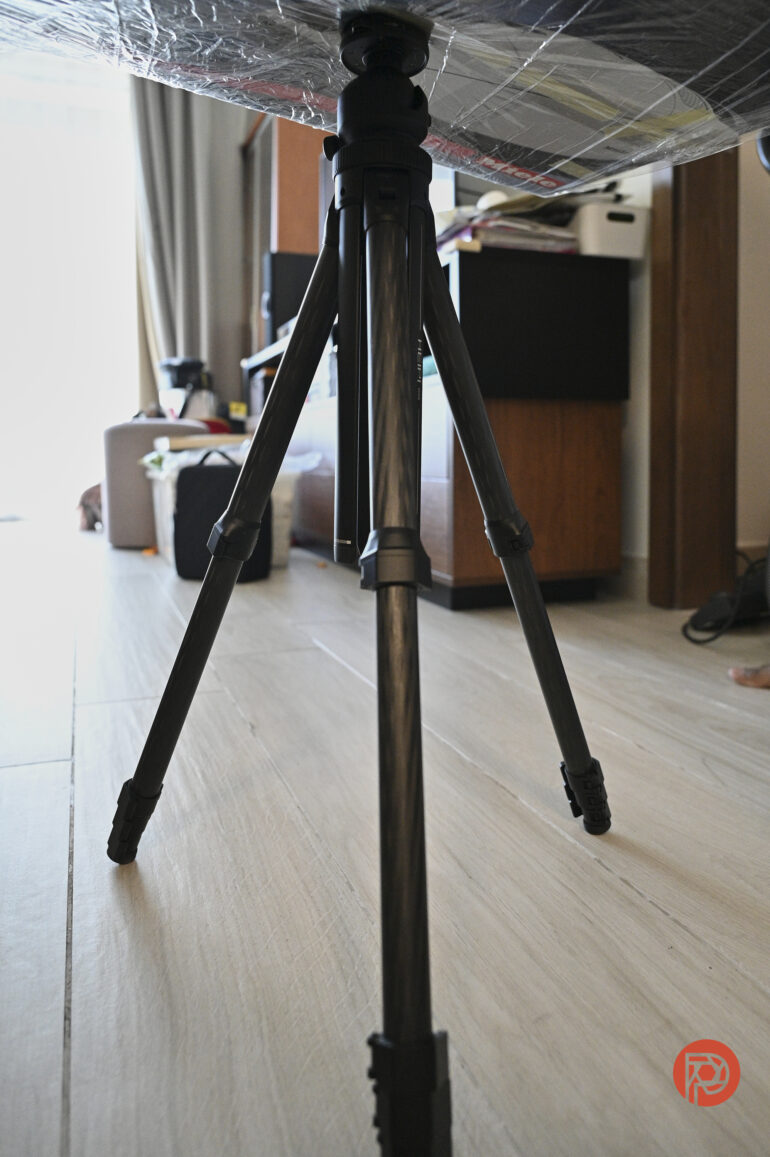
25kgs is a lot to keep up. It’s also not a weight that I could easily find at home. Luckily my folks were moving homes, so I was able to borrow one of their boxes full of stuff. This weighed in at under 20kgs. I added a 5kg dumbbell to the top, and with some acrobatic balancing, I tested the Heipi’s load capacity.
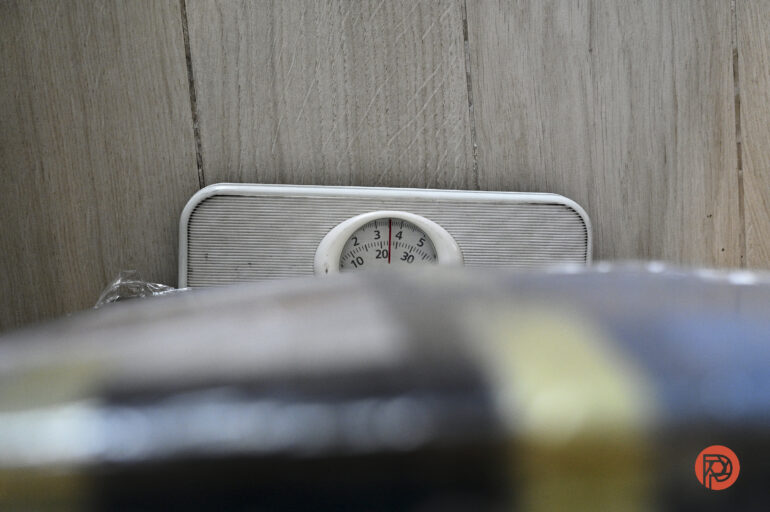
For 3 minutes, I balanced this box and weight on the tripod while my wife tried to get a picture at the best possible angle. After this, I expected to see the Heipi looking bow-legged. Got that one totally wrong; the legs remained perfectly straight. I didn’t notice any extra resistance while closing the legs up either. The ball head, too was as smooth as before. Still looks round, not like a squashed ball of pizza dough.
Well done, Heipi; you aced the load test too.
The Fall Test
I left this one for the last because it was the one that could really damage the tripod. Intended to mimic what could happen to your tripod if it took a tumble on a mountainside, I tipped it over a flight of stairs, without a camera on it, of course.
Before you try this (not something I recommend), remember to close any doors to the stairwell in your apartment building. Not just because the sound of a tumbling tripod can feel like someone is rolling down the stairs. But also so that no one can hear you when you scream in painful anguish at doing something like this to your camera gear.
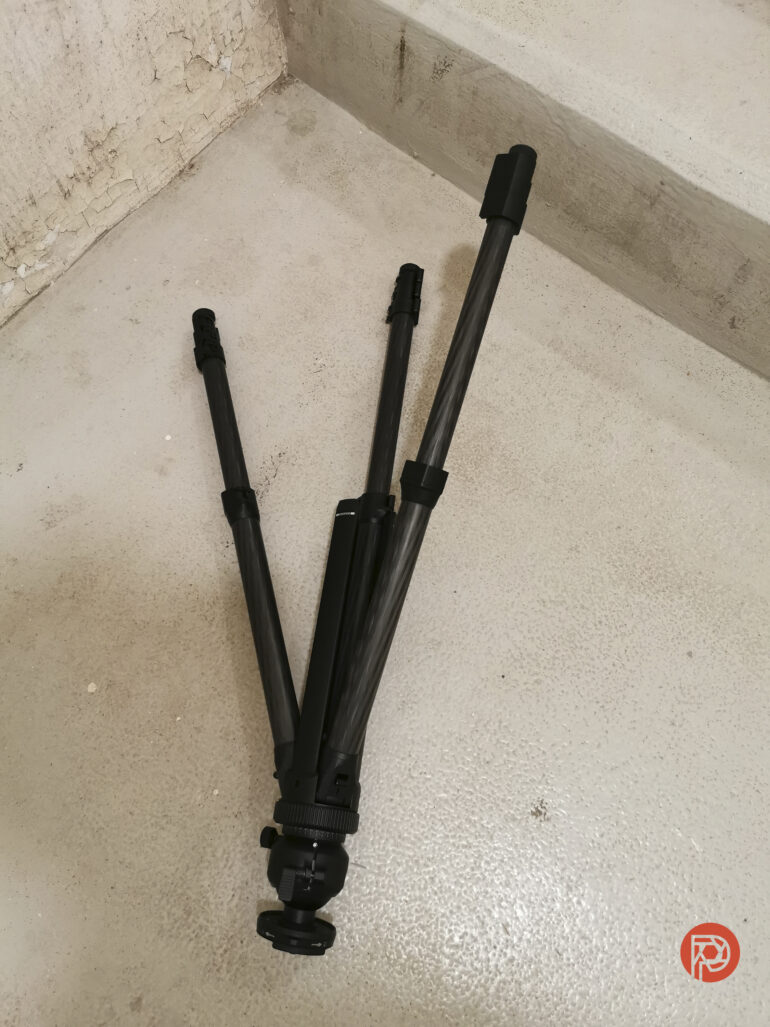
I kind of felt that the main tripod could take the fall. The ballhead is of course, more easily replaced. The sub-tripod was the one I was worried about the most. Surprisingly, the ballhead and the main tripod were the ones that took the most scuffs. The sub seems relatively unscathed.
Just for good measure, I sent the tripod down the stairs a second time. Because, you know, butter-fingered people like me are more than likely to push a tripod more than once on a holiday.
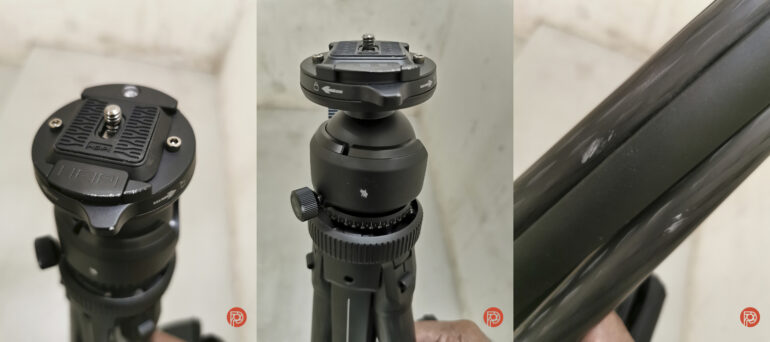
I half thought the security guard or the cleaning staff of my building would rush to me; that’s how much noise echoed in the stairwell. And while I thought that the second fall spelled the end of the Heipi as a working tripod, it continued to impress me. Scuffs and scratches aside, it kept on going when I took it out for a shoot after that.
Who should buy the Heipi 3-in-1 Tripod?
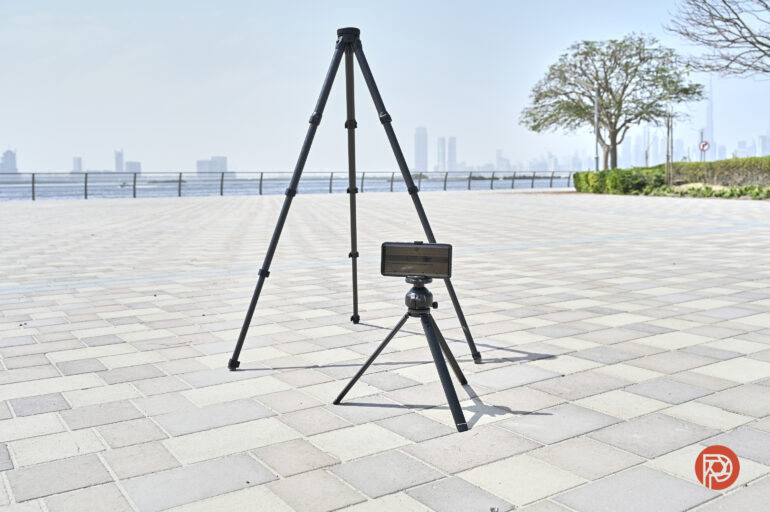
If you’re looking for a lightweight but sturdy tripod that can take a few knocks when you’re globetrotting, this one could just be the tripod you’re looking for. It may look flimsy at first, but it’s far from that. The inbuilt sub-tripod is a genius idea for anyone who needs a smaller tripod to grab in a jiffy.
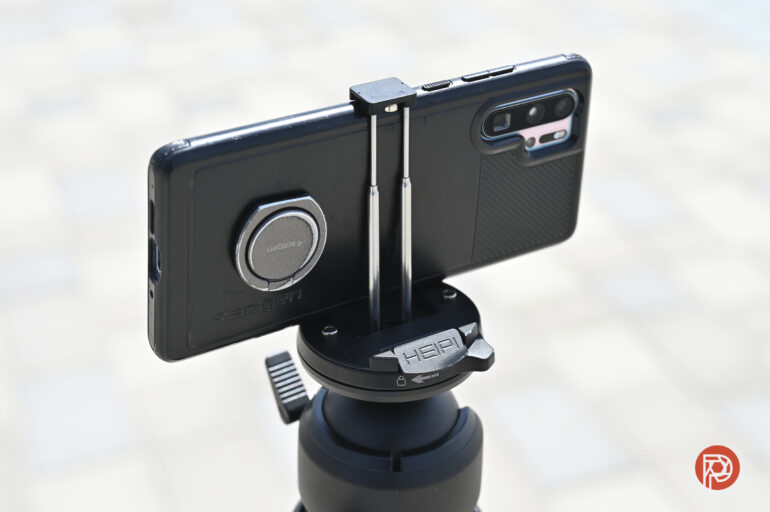
The ballhead contains a concealed smartphone holder for your phone photography or videography needs. And you have to love the fact that they also threw in a large QR plate. I only wish the sub-tripod legs could also have been made from carbon fiber instead of aluminum alloy. That could have shaved a few ounces off the weight. Also, those accessory ports on both tripods really need to line up when the sub-tripod is fully inserted into the main one.
The tests are a testament to its build quality and durability. The Heipi can get knocked down but will continue to get up and perform like a champ each time. It tucks away neatly when collapsed. Overall I’d say it’s a reliable choice for anyone looking for a new travel tripod.


